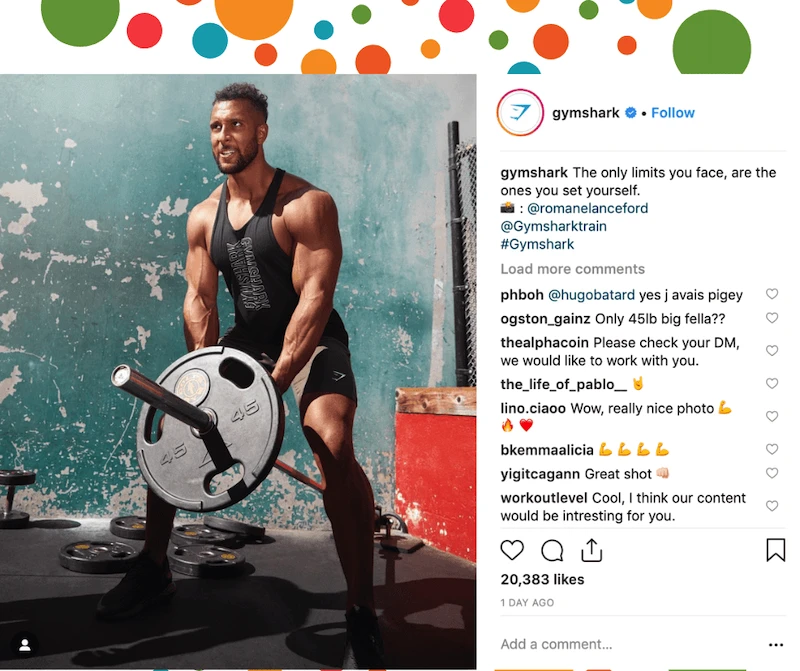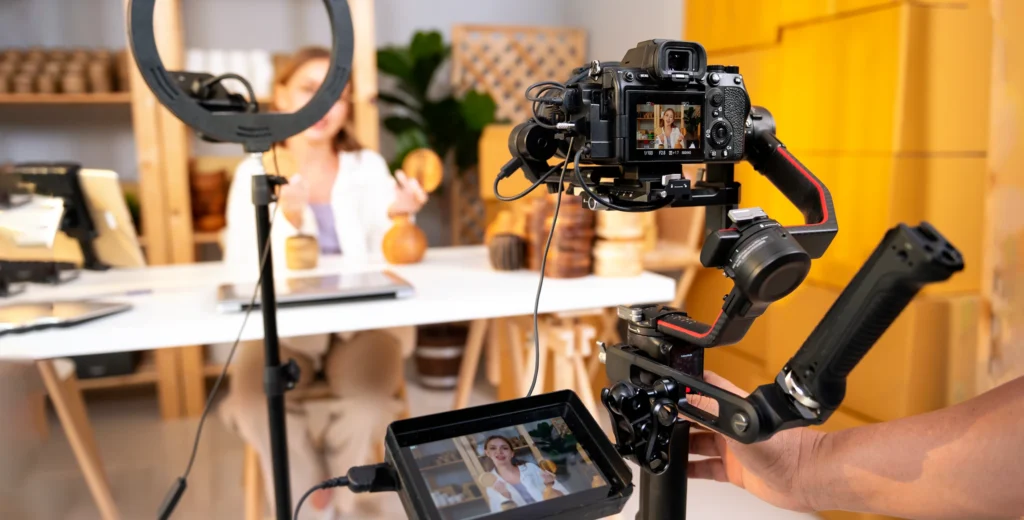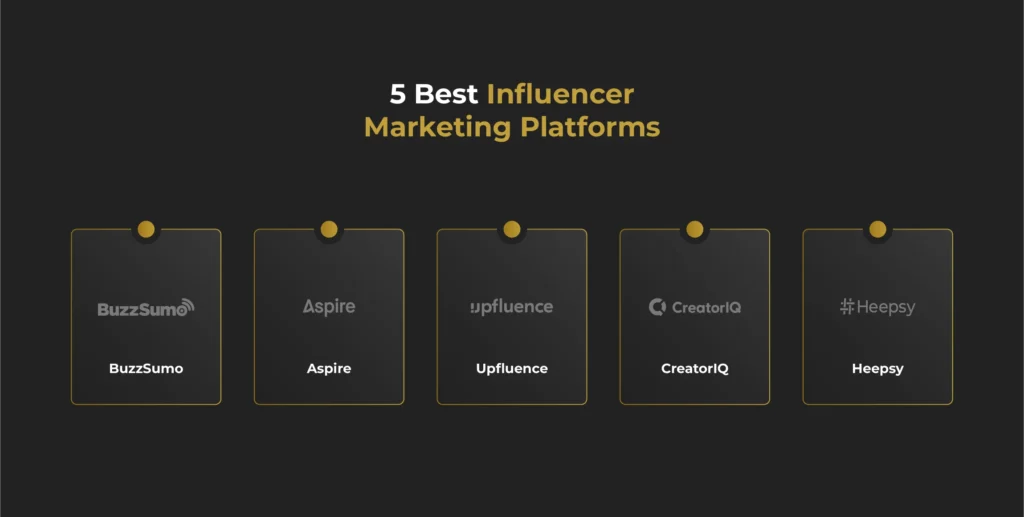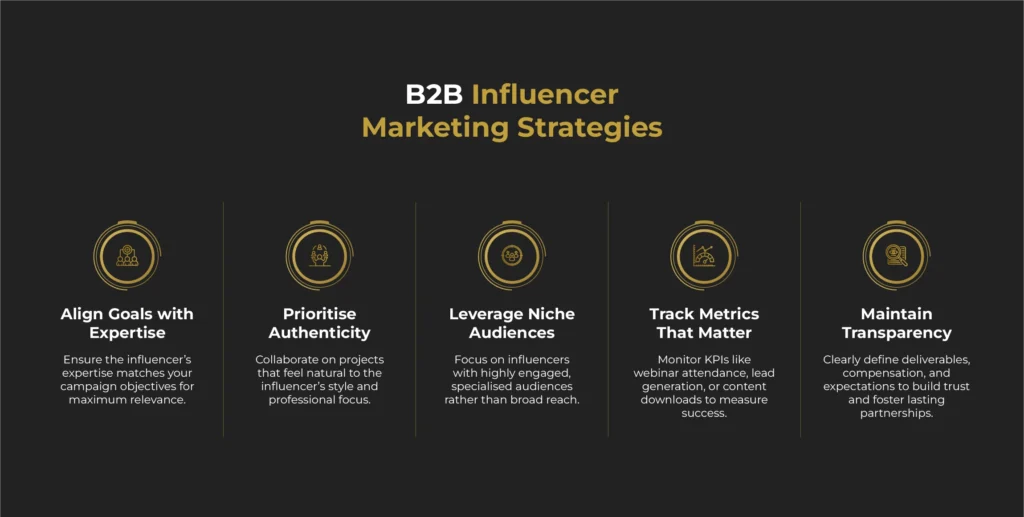Influencer marketing has completely changed how businesses interact with their audiences.
Case in point: The influencer marketing industry is currently valued at a whopping $24 billion.
This impressive stat suggests that more and more brands are recognising the power of influencer marketing in driving engagement and building trust with their audiences.
Unlike traditional advertising, which often feels impersonal, influencer marketing places the brand directly within the content consumers already love.
But what exactly makes influencer marketing so impactful?
It’s all about trust and relatability.
Studies show that people are far more likely to trust recommendations from individuals they admire than generic brand advertisements. According to HubSpot, 31% of social media users discover new products through an influencer they follow.
But the impact of influencers isn’t just restricted to product discovery. Influencers even influence people’s purchase decisions, with 21% of users claiming to have made a purchase because of an influencer’s recommendation.
Influencers bridge the gap between brands and consumers, creating campaigns that feel less like ads and more like real conversations.
In this guide, we’ll explore the fundamentals of influencer marketing, dive into actionable strategies, and provide you with the tools to execute successful campaigns.
From understanding the types of influencers to calculating ROI, this comprehensive guide has everything you need to master the art of influencer marketing.
Let’s dive in.
[lwptoc min=”8″ depth=”1″ hierarchical=”1″ numeration=”decimalnested” numerationSuffix=”dot” title=”Table of Contents” toggle=”0″ backgroundColor=”#ffffff” borderColor=”#ffffff” linkColor=”#997317″]
What is Influencer Marketing?
Influencer marketing is a collaboration between brands and individuals who have a strong connection with a particular audience.
These individuals – known as influencers – leverage their credibility to promote products or services. Their influence stems from their ability to communicate in a way that resonates with their followers, often weaving the brand’s message into authentic content.
For example, when a fitness influencer shares their experience using a new brand of protein powder in their workout routine, it feels less like a sales pitch and more like a genuine recommendation. Followers trust the influencer’s expertise and authenticity, making them more likely to try the product themselves.
This trust and relatability are what set influencer marketing apart from traditional ads, where the message often feels generic or disconnected from the consumer’s reality.
The ultimate goal of influencer marketing is fostering trust with the audience. Unlike traditional ads, influencer marketing relies on authenticity, making the promotion feel more organic and believable.
Types of Influencers and Their Roles
Influencers aren’t a one-size-fits-all solution. Depending on their reach and niche, they can be categorised into the following tiers:
- Nano-Influencers (1,000–10,000 followers): Ideal for hyper-targeted campaigns. Their small but loyal audiences often engage at higher rates, making them perfect for niche products or local businesses.
- Micro-Influencers (10,000–50,000 followers): Known for their expertise in specific areas, they strike a balance between reach and engagement. They’re often budget-friendly yet effective.
- Macro-Influencers (50,000–500,000 followers): These influencers have a larger audience and are ideal for scaling campaigns. They maintain some level of personal connection with followers but are less niche-focused.
- Mega-Influencers (500,000+ followers): Typically celebrities or public figures, they offer massive reach but may lack the authenticity or relatability of smaller influencers.
Each type serves a unique purpose. For example, a nano-influencer might be better suited for promoting a local coffee shop, while a mega-influencer is more effective for a global product launch.
The Rise of Influencer Marketing Agencies
The staggering growth of the influencer marketing industry has led to the emergence of agencies that specialise in crafting effective influencer marketing strategies. These agencies take the guesswork out of influencer campaigns by managing everything from influencer discovery to campaign execution.
By leveraging their expertise, brands can focus on strategy while leaving the logistical details to professionals.
Learn more about how Dominate Online can take your influencer marketing campaigns to the next level. With our results-driven approach and deep industry expertise, we ensure your brand not only connects with the right influencers but also achieves measurable, impactful results.
How to Develop an Influencer Marketing Strategy
Influencer marketing is all about aligning the right influencers with your brand’s values, objectives, and audience preferences. With platforms like TikTok, YouTube, and Instagram offering unique opportunities, an effective influencer marketing strategy requires a deep understanding of where and how your audience engages.
Like any impactful marketing strategy, influencer marketing thrives on thoughtful preparation. Here are the essential steps to help you build a strategy that delivers measurable results.
1. Identify Target Audiences and Relevant Influencers
The first step in any influencer marketing campaign is understanding your audience.
Who are they? What are their interests, needs, and pain points?
Once you have a clear picture, you can identify influencers who align with your brand’s values and appeal to your target demographic.
For example, if your product targets eco-conscious millennials, partnering with a sustainability-focused influencer is a natural fit.
Tools like BuzzSumo, CreatorIQ, and Heepsy can help you discover influencers based on engagement metrics, audience demographics, and content style.
2. Craft a Compelling Influencer Marketing Campaign
Successful campaigns start with clear objectives.
Are you aiming to build brand awareness, drive website traffic, or boost sales?
Your goals will shape the type of content you produce and the influencers you collaborate with.
Work closely with influencers to co-create content that feels genuine.
Important: Instead of dictating every detail, allow influencers the creative freedom to integrate your brand into their storytelling.
This not only ensures authenticity but also enhances engagement.
Gymshark’s collaboration with fitness influencers is a prime example of this approach. Instead of micromanaging content, the brand gave influencers the freedom to showcase its activewear in their unique style—be it during workouts, lifestyle posts, or fitness tips.

Image Credit: Kadence
3. Set a Budget for Your Campaign
The next step is to define a clear budget for your influencer marketing campaign.
Influencer marketing costs can vary significantly depending on the type of influencers you partner with, the social media platform you use, and the scope of your campaign.
For instance, working with nano- or micro-influencers can be cost-effective for smaller campaigns, while macro- or mega-influencers may require a more substantial budget but offer broader reach.
Keep in mind that influencer fees are just one part of the equation.
Additional expenses, such as content creation, platform subscriptions, and paid amplification, should also be factored into your overall budget.
For example, if you’re launching a product and need multiple influencers to promote it across various social media channels, ensure your budget accounts for the diversity in their rates.
Transparency with influencers about expectations and deliverables will help you allocate funds efficiently.
By setting a realistic budget upfront, you’ll be better equipped to manage resources and measure the ROI of your campaign effectively.
4. Engage in Influencer Outreach
Once you’ve identified the influencers who align with your brand and set a budget, the next step is reaching out to them. Influencer outreach is about building meaningful relationships, not just seeking a one-off collaboration.
The way you approach influencers can significantly impact their willingness to work with you.
Start by personalising your outreach. Instead of sending a generic message, demonstrate that you’ve done your homework. Mention specific aspects of their content that resonate with your brand or audience.
For instance, if you’re reaching out to a food blogger, highlight a recipe post they’ve created that aligns with your product.
Clearly outline your campaign objectives, what you’re offering, and why you believe they’re a great fit for your brand. Be transparent about deliverables, compensation, and timelines to establish trust from the outset.
Platforms like Aspire or Upfluence can streamline this process by providing templates and communication tools.
5 Best Influencer Marketing Platforms
If you’d like to streamline your influencer marketing campaigns, the smart choice is to rely on influencer marketing platforms. These platforms help identify influencers, manage collaborations, and track campaign performance, saving you both time and effort.
Here are the top 5 influencer marketing platforms that stand out for their features and benefits:
1. BuzzSumo
Known for its powerful content analysis capabilities, BuzzSumo helps brands discover influencers based on topic relevance, content performance, and engagement metrics. It’s ideal for identifying thought leaders in specific niches.
2. Aspire
Aspire is a user-friendly influencer marketing platform that offers end-to-end campaign management. It helps you discover influencers, manage communications, and analyse performance metrics—all within a single platform.
3. Upfluence
With a vast influencer database and eCommerce integration, Upfluence is perfect for brands looking to connect with influencers and track direct sales from campaigns. Its analytics tools provide valuable insights into audience demographics and you also get access to influencer outreach templates.
4. CreatorIQ
Designed for enterprise brands, CreatorIQ is an influencer marketing platform that provides advanced reporting features and AI-driven insights to optimise influencer collaborations. It’s a robust platform for managing large-scale campaigns effectively.
5. Heepsy
Heepsy specialises in granular search filters, allowing brands to find influencers by location, niche, and engagement rates. It’s an excellent choice for targeting specific audiences with precision.
These platforms simplify influencer marketing, making it easier for brands to focus on crafting impactful campaigns.
How to Implement Influencer Marketing Tactics
Implementing influencer marketing effectively requires a combination of strategic planning and practical execution. Whether you’re targeting B2B or B2C audiences, the right tactics can amplify your brand message and deliver measurable results.
This section covers key approaches for both B2B and B2C influencer marketing, essential techniques for social media platforms, ways to measure success, and factors to consider when analysing costs and ROI.
B2B Influencer Marketing Strategies
B2B brands can benefit from influencer marketing by collaborating with industry experts or thought leaders. These partnerships can include co-branded webinars, guest blogs, or LinkedIn collaborations that position your brand as a trusted authority.
Here are a few best practices to keep in mind to ensure your collaborations drive meaningful results:
- Align Goals with Expertise: Ensure the influencer’s expertise matches your campaign objectives for maximum relevance.
- Prioritise Authenticity: Collaborate on projects that feel natural to the influencer’s style and professional focus.
- Leverage Niche Audiences: Focus on influencers with highly engaged, specialised audiences rather than broad reach.
- Track Metrics That Matter: Monitor KPIs like webinar attendance, lead generation, or content downloads to measure success.
- Maintain Transparency: Clearly define deliverables, compensation, and expectations to build trust and foster lasting partnerships.
Effective Social Media Influencer Marketing Techniques
For B2C brands, social media platforms like Instagram, YouTube, and TikTok dominate the influencer marketing space. Here are some tried-and-tested influencer marketing techniques in the B2C space:
- Sponsored Content: Influencers create posts, videos, or stories featuring your product.
- Unboxings: Popular among beauty and tech influencers, unboxing videos generate excitement and showcase product features.
- Tutorials and How-Tos: Demonstrating your product in action builds trust and helps audiences see its value.
- Giveaways: Partnering with influencers for giveaways can significantly boost engagement and reach.
Measuring the Success of Influencer Marketing Campaigns
Measuring the success of your influencer marketing campaign is crucial to understand its impact and refine your strategy for future efforts. Tracking the right metrics allows you to assess whether your campaign is meeting its objectives.
- Engagement Rates: Metrics like likes, comments, shares, and saves provide insights into how well the content resonates with the audience. A high engagement rate often signals strong audience connection and interest.
- Website Traffic: Use UTM codes to track traffic driven directly from influencer posts. This helps you identify which influencers and content formats are most effective at driving visitors to your site.
- Conversions: Whether it’s product purchases, app downloads, or newsletter sign-ups, tracking conversions offers a direct way to measure ROI. Tools like Google Analytics and affiliate links can help attribute sales or sign-ups to specific influencers.
Additional metrics, such as audience growth, brand mentions, or hashtag usage, can provide a broader picture of your campaign’s success.
Regularly analysing these metrics ensures you’re not only hitting your targets but also uncovering areas for improvement in your influencer marketing efforts.
Influencer Marketing Cost Considerations
When planning an influencer marketing campaign, understanding and managing costs is crucial.
Influencer pricing is highly variable, depending on factors such as follower count, engagement rate, platform, content type, and campaign complexity.
While nano-influencers (1,000–10,000 followers) may charge as little as $100–$500 per post, macro-influencers (50,000–500,000 followers) often command rates in the thousands, and celebrity influencers can charge tens of thousands or more for a single piece of content.
It’s important to remember that these rates typically cover only the content creation and posting. Additional costs may include platform fees, product samples, paid amplification to boost reach, or even travel expenses if influencers are attending events or shoots.
To make the most of your budget, align your spending with your goals.
For instance, if your priority is high engagement and targeted reach, investing in multiple nano- or micro-influencers may be more effective than partnering with a single macro-influencer.
Conversely, if your goal is widespread brand awareness, macro- or mega-influencers can offer the visibility you need.
You can use tools like Upfluence and Aspire to estimate influencer costs based on audience demographics and engagement.
Analysing ROI and Campaign Performance
Measuring ROI in influencer marketing goes beyond calculating direct financial returns.
While comparing the revenue generated with the total campaign cost is the most straightforward way to assess ROI, it’s equally important to consider the intangible benefits that contribute to long-term brand growth.
Start by defining your campaign goals. If your aim is direct sales, track the purchases made through affiliate links or promo codes provided by influencers.
For awareness campaigns, focus on metrics like reach, impressions, and engagement rates.
Tools like Google Analytics or Shopify integrations can help attribute these results directly to your influencer efforts.
Beyond monetary returns, assess qualitative outcomes such as:
- Brand Sentiment: Monitor social media mentions and comments to gauge how audiences perceive your brand post-campaign.
- Follower Growth: Analyse whether your brand’s social accounts gained new followers as a result of the campaign.
- Content Longevity: High-quality influencer content can be repurposed for your own marketing channels, providing ongoing value.
While some benefits may be harder to quantify, combining tangible results with these qualitative insights ensures a holistic view of your campaign’s success. This balanced approach helps refine future strategies and optimise results.
Conclusion: The Future of Influencer Marketing & Your Path to Success
Influencer marketing has reshaped how businesses build trust, engage audiences, and drive results. Its unique ability to blend authenticity with measurable outcomes makes it an indispensable tool in the modern marketer’s arsenal.
From nano-influencers with niche audiences to macro-influencers driving mass visibility, the power of this strategy lies in its adaptability and effectiveness across industries and demographics.
As the industry continues to grow, the opportunities for brands are limitless. With advancements in technology and shifting consumer behaviour, the potential for influencer marketing to deliver personalised, impactful campaigns will only expand. Those who stay ahead of trends and embrace innovative strategies will remain competitive in this ever-evolving landscape.
But here’s the catch: success in influencer marketing requires expertise, precision, and a results-driven approach. That’s where we come in. At Dominate Online, we specialise in creating strategic influencer campaigns that don’t just get your brand seen—they ensure you dominate your market.
Partner with us to build your brand, elevate your online presence, and achieve unparalleled growth. Let’s move beyond visibility and create results that matter. When just being seen is not enough, it’s time to Dominate.
Take the first step today—contact Dominate Online and let’s start your journey to digital domination.
Influencer Marketing FAQs
How do I find the right influencers for my brand?
Use tools like BuzzSumo, Upfluence, or AspireIQ to identify influencers based on audience demographics, engagement rates, and niche relevance. Always ensure their values align with your brand.
How much does influencer marketing cost?
Costs vary based on the influencer’s reach, platform, and content type. Nano-influencers may charge $100–$500 per post, while macro- or celebrity influencers can demand thousands.
What platforms work best for influencer marketing?
Popular platforms include Instagram, TikTok, YouTube, and LinkedIn, depending on your target audience and goals. Tools like CreatorIQ and Heepsy can help optimise campaigns across these platforms.
How do I measure the success of an influencer marketing campaign?
Track metrics like engagement rates, website traffic (using UTM codes), conversions, brand mentions, and follower growth. Tools like Google Analytics and platform-specific insights are helpful.
Can influencer marketing work for B2B brands?
Yes, B2B brands can collaborate with industry thought leaders for co-branded content, webinars, and LinkedIn campaigns to establish credibility and drive leads.
How can Dominate Online help with influencer marketing?
Dominate Online specialises in crafting results-driven influencer marketing campaigns, from influencer discovery to execution and ROI analysis. We ensure measurable, impactful outcomes tailored to your brand’s needs.
What are the main benefits of influencer marketing?
Influencer marketing builds trust, drives engagement, increases brand awareness, and delivers measurable ROI through targeted campaigns.
Is influencer marketing only for large brands?
No, businesses of all sizes can benefit. Nano- and micro-influencers are often cost-effective for smaller brands and deliver excellent engagement.
What industries benefit most from influencer marketing?
Industries like fashion, beauty, fitness, tech, and food thrive in influencer marketing, but nearly any sector can leverage it effectively with the right strategy.


